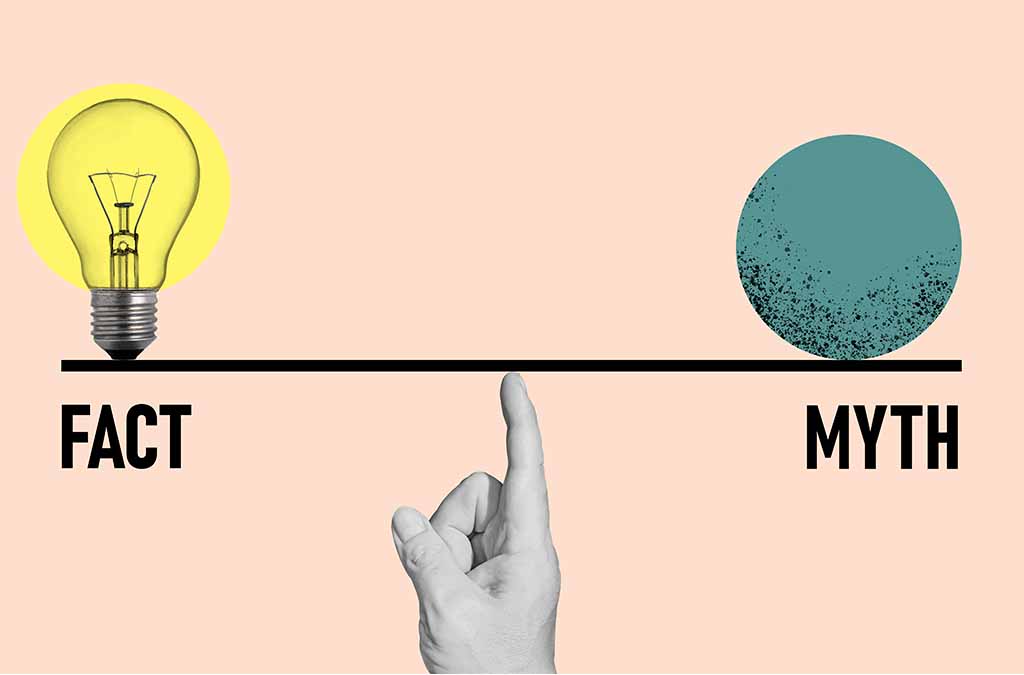A vasectomy is a minor outpatient surgical procedure for male sterilization as a permanent method of birth control. It is the most commonly performed urologic procedure in the United States, with an estimated 500,000 or more procedures performed annually. Vasectomy is the most effective form of any birth control available, with a 99.95% success rate in preventing pregnancy.
Because vasectomy is a permanent method of birth control, it should only be considered by men who are 100% sure that they will not want children in the future.
A vasectomy is performed by cutting and sealing the tubes (vas deferens) that carry sperm out of the testicles, therefore preventing sperm from reaching the semen that is ejaculated during sexual activity. Because ejaculate is primarily composed of fluid (semen), there is no noticeable change in the ejaculate appearance or volume after a vasectomy. Sperm are effectively reabsorbed by the body, and sexual function, including erections, sexual desire, sensitivity, and ejaculation, are unchanged.
This blog will answer these common questions:
- What is a traditional vasectomy?
- What is a no-needle, no-scalpel vasectomy?
- What are the important differences and advantages of a no-needle, no-scalpel vs. a traditional vasectomy?
- How effective is a no-needle, no-scalpel vasectomy?
- What does recovery from a no-needle, no-scalpel vasectomy feel like?
- What are some myths about vasectomy?
Different Types of Vasectomy
Traditional or Conventional Vasectomy
The original form of vasectomy, the only one available in the U.S. until the late 1990s, is now called a “traditional vasectomy.” This “traditional” technique involves making two scrotal incisions over each vas deferens. Although it is still the most commonly performed type of vasectomy and has an excellent success rate, a traditional vasectomy is a longer procedure than a no-needle, no-scalpel procedure, there is more trauma to the tissue, it requires stitches to close both incisions, and it carries a higher risk of complications that may include bleeding, infection, and chronic pain.
No-Scalpel Vasectomy (NSV)
The newest and least invasive approach to vasectomy is the “no-scalpel vasectomy” (NSV) developed in China in the late 1980’s and popularized in the United States in the late 1990’s.
Instead of cutting the skin with a scalpel, the surgeon performing a NSV uses a specialized tiny instrument to poke into the scrotal sac and spread the sac open just enough to be able to squeeze the vas deferens through the skin. A puncture is possible because the skin is very thin and stretchy in this region of the male body. This technique is typically done through a single midline puncture site.
Through this tiny hole, the surgeon can secure the vas deferens and pull it up through the skin opening to perform the snipping and sealing of the vas deferens. As the vas deferens drops back into the scrotum, the hole closes back up. No stitches are needed and there is minimal risk for bleeding. After a few days, the site of the vasectomy is usually difficult to locate.
No-Scalpel, No-Needle Vasectomy
In addition to the no-scalpel technique, no-needle anesthesia is used in a no-scalpel, no-needle vasectomy.
Instead of anesthesia delivered by a needle, a device called a Mada-jet can be used to spray anesthesia into the skin. A small welt is made with each spray almost like a mosquito bite, which patients say feels like the snap of a small rubber band. Four sprays in a row over each vas deferens allow for effective anesthesia without the need for a needle injection. Patients report significantly less pain with this technique than with conventional needle anesthesia.
What are the advantages of a no-needle, no-scalpel vasectomy?

The advantages of a no-needle, no-scalpel vasectomy vs. a traditional incisional surgical technique include:
- Reduced pain: the procedure is generally less painful compared to the traditional technique using a scalpel
- Less bleeding: the procedure results in less bleeding, hematoma, and infection risk
- Faster recovery: the absence of stitches and a smaller incision usually results in a quicker recovery
- Lower risk of complications: this minimally invasive procedure minimizes complications thus making the non-needle, no-scalpel vasectomy safer in general
- Lower risk of chronic pain after the procedure: Because it’s less invasive and has a lower risk of bleeding and infection, this procedure results in a lower risk for long-term chronic pain which can occur in approximately 1% of all types of vasectomies
- No need for premedication: This means you are able to have normal meals before the procedure, you are able to work before the procedure, and you are able to drive yourself to and from the procedure.
With all of these advantages, a no-needle, no-scalpel vasectomy (NSV) is the best choice for male vasectomy.
Why don’t all surgeons perform no-needle, no-scalpel vasectomy?
A no-needle, no-scalpel vasectomy is technically much more difficult to learn and perform. Most urology training programs teach urology trainees the traditional technique, and most urologists performing vasectomies did not do additional fellowship training after residency in male reproductive surgery where the nuanced techniques of vasectomy and vasectomy reversal are learned.
The traditional vasectomy is also not significantly worse for patients, even though the minor differences between a traditional vasectomy and a NSV likely add up to 1-2 days shorter recovery and lower potential rates for complications.
The aging workforce in urology has also contributed to the fact that most vasectomies are still performed with traditional techniques.
For all of these reasons, a no-needle, no-scalpel vasectomy is much less commonly available. It’s fair to say that a traditional or conventional vasectomy is completely fine for many patients, while the no-needle, no-scalpel technique is a far superior technique for patients who are seeking out the best.
How effective is a no-needle, no-scalpel vasectomy?
The effectiveness of a no-needle, no-scalpel vasectomy is the same as other types of vasectomy. The technique of anesthesia and whether or not standard incisions are made does not alter the method of occlusion used to block the sperm flow from the vas deferens, which is generally the same with each technique.
A vasectomy is close to 99.95% effective in preventing pregnancy.
It is important to note, however, that a vasectomy does not provide immediate protection. An alternative form of birth control is needed until your doctor confirms there are no sperm in your semen. Before having unprotected sex, three months must pass and ejaculation must occur 20 to 30 times or more to clear all sperm from your semen.
Most surgeons do a follow-up semen analysis 12 weeks after surgery to make certain that no sperm are present.
It is also important to note that a vasectomy will not protect sexual partners from sexually transmitted infections. For this reason, other forms of protection such as condoms are needed if there is a risk of acquiring or transmitting a sexually transmitted infection.
What does recovery from a no-scalpel, no-needle vasectomy feel like?

Immediately After a Vasectomy
Patients are encouraged to have 3-4 days for recovery without any work, travel, or scheduled activities. The first 1-2 days should be spent on the couch resting. Ice packs may be applied for the first 1-2 days.
A patient might have some mild swelling, bruising, and minor pain in the scrotum for several days after the surgery. Prescription-strength narcotic pain medicine is not necessary, and a combination of over-the-counter Tylenol and ibuprofen anti-inflammatories can be taken for several days after the procedure.
Scrotal support with a jock or tight underwear is recommended for 2-3 days.
Aside from anti-inflammatories, ice, supportive underwear, and rest, a patient can resume normal walking and very light activity after 2-3 days of house rest. Most men can return to work in about 3-4 days depending on the physical demands of the job. Men who work more strenuous or physical jobs should consider taking 7 days off of work.
Ejaculation should be avoided for a minimum of 7 days. Strenuous physical activity like workouts and running should be avoided for 2 weeks, and contact sports should be avoided for 3 weeks. There should be no noticeable pain when normal sexual and physical activity is resumed.
For the 1-2 months after vasectomy, mild tenderness or discomfort may be felt during sexual arousal and/or ejaculation, and this almost always resolves. It takes 2-3 months after a vasectomy for all remaining sperm in the vas to be ejaculated. Another method of birth control is absolutely necessary until a negative semen sample is produced.
Follow-up after Vasectomy
As mentioned above, one of the most important parts of the vasectomy is the post-vasectomy semen analysis. This is done at least 3 months after the vasectomy which is usually after 20-30 ejaculations. Most men just need one analysis, but if sperm are still present it may be necessary to repeat the semen analysis.
What are some of the myths about vasectomy?

Some men worry that a vasectomy can cause particular problems, but a vasectomy will not:
- Affect sexual performance. It will not affect sex drive or one’s masculinity in any way.
- Permanently damage sexual organs. There is very little risk that the testicles, penis, or any other part of the male reproductive system will be injured during surgery. In extremely rare cases, an injury to the blood supply could lead to the loss of a testicle, but this is extremely rare with a skilled surgeon.
- Increase risk of prostate cancer. There have been a lot of medical studies on this, and it is conclusive that there is no connection between vasectomies and prostate cancer.
- Cause severe pain. A feeling of minor pain and pulling can occur during surgery, but severe pain is rare. After surgery, there can be some pain, but for most men, any pain experienced is minor and goes away after a few days.
One side effect that is not uncommon with vasectomy is there may be a 5-10% reduction in the volume of a patient’s ejaculate, but this amount is not noticeable for most people.
Dr. Matt Coward at Atlantic Reproductive Medicine in Raleigh, North Carolina is one of the only fellowship-trained male reproductive surgical specialists performing no-needle, no-scalpel vasectomy in the Southeast.
Atlantic Reproductive Medicine in Raleigh, North Carolina has one of the only fellowship-trained specialists in the southeastern region offering a true no-scalpel, no-needle vasectomy.
Dr. Matt Coward performs the procedure in the comfortable setting of a reproductive medicine clinic. Travel to Atlantic Reproductive Medicine is convenient, and the Raleigh area is inviting. The office is only ten minutes from Raleigh-Durham International Airport and centered in the Research Triangle, known for its biotech companies and three top-tier universities (UNC, Duke and NC State).
At Atlantic Reproductive Medicine, patients receive the level of medical expertise provided at top medical institutions but in a private setting offering a personal and tailored approach.
Learn all about Atlantic Reproductive Medicine and Dr. Matt Coward here: https://www.atlanticfertility.com
If you are interested in scheduling a consultation for a vasectomy with Atlantic Reproductive Medicine, click here.

